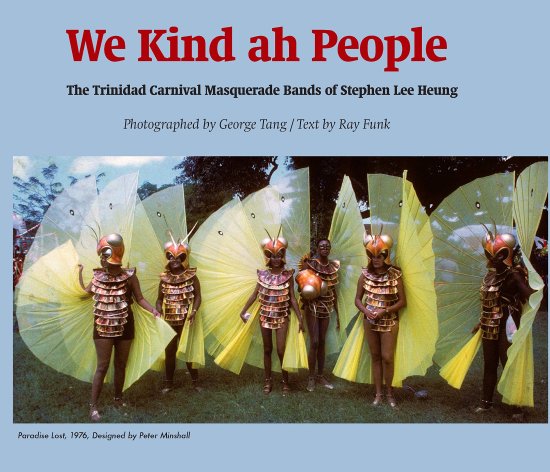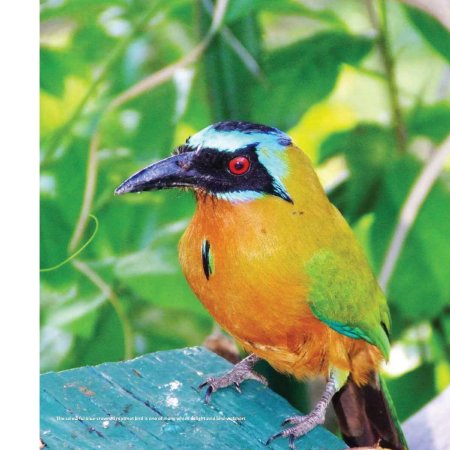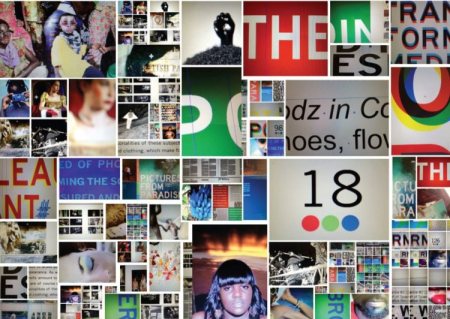by Shivanee Ramlochan, Paper Based Blogger

Blurb, 2014.
Welcome to the 2015 Paper Based Advent Book Blog! Revellers and rambunctious fêters, those who sigh wistfully in remembering what they deem T & T carnival’s golden days, will sound a vuvuzela of delight over our Day Ten selection: Ray Funk’s We Kind ah People, with photography by George Tang.
A presentation on the Carnival bands of Stephen Lee Heung, which spanned an artistic legacy of fifty years, Funk’s text accompanies Tang’s photographs with seamless reportage and faithful commentary. These lovingly shot images, which focus on the evident wonder and merriment on bandgoers’ faces and the spirit within their chipping, swaying bodies, were previously shared exclusively within private and family circles. Their presence in this chronicle of Lee Heung’s innovation and design imagination is in itself a gift, one Funk describes in lavish but never overshadowing detail.
Carlisle Chang’s fantastical inventions; Peter Minshall’s trailblazing magic; Wayne Berkeley’s distinctive flair; the Eustace family’s cadre of lavish thematic concoctions: all the designers beneath Lee Heung’s banner are afforded full-colour spreads of their presentations, sorted by year. Of Minshall’s paradigm-altering 1976 Paradise Lost, Funk quotes Nicholas Laughlin’s awed assessment from Caribbean Beat:
“As the band flowed through the streets and across the Savannah, a grand narrative unfolded. Thousands of onlookers were astounded. Carnival would never be the same.”
All-inclusive in his depiction of five decades of mas production, Funk summons the voices of other Carnival scholars and writers, including Michael Anthony and a then-Trinidad Guardian arts reporter, Derek Walcott. The Carnival annuals of Roy Boyke are also featured, along with a timeline of Lee Heung’s bands, a biographical essay on the mas pioneer, and photo galleries worth hours’ of animated porings, discussions and lively “do you remember whens”. Whether you jumped up beneath the Stephen Lee Heung banner, or are a younger maswoman curious about the origins of T & T Carnival’s spectacle, animation and band history, We Kind ah People is a devoted ode to a time when there were far fewer bikinis, but not an ounce less bacchanal, boldness or bravery in our Carnival Mondays and Tuesdays.
We recommend it for: culture, sociology and theatre scholars, students and researchers; curators of the evolving Carnival experience; Minshall devotees who want to relive, or newly experience the mas maestro’s first festival-revolutionizing triumph.














 Robert & Christopher Publishers
Robert & Christopher Publishers